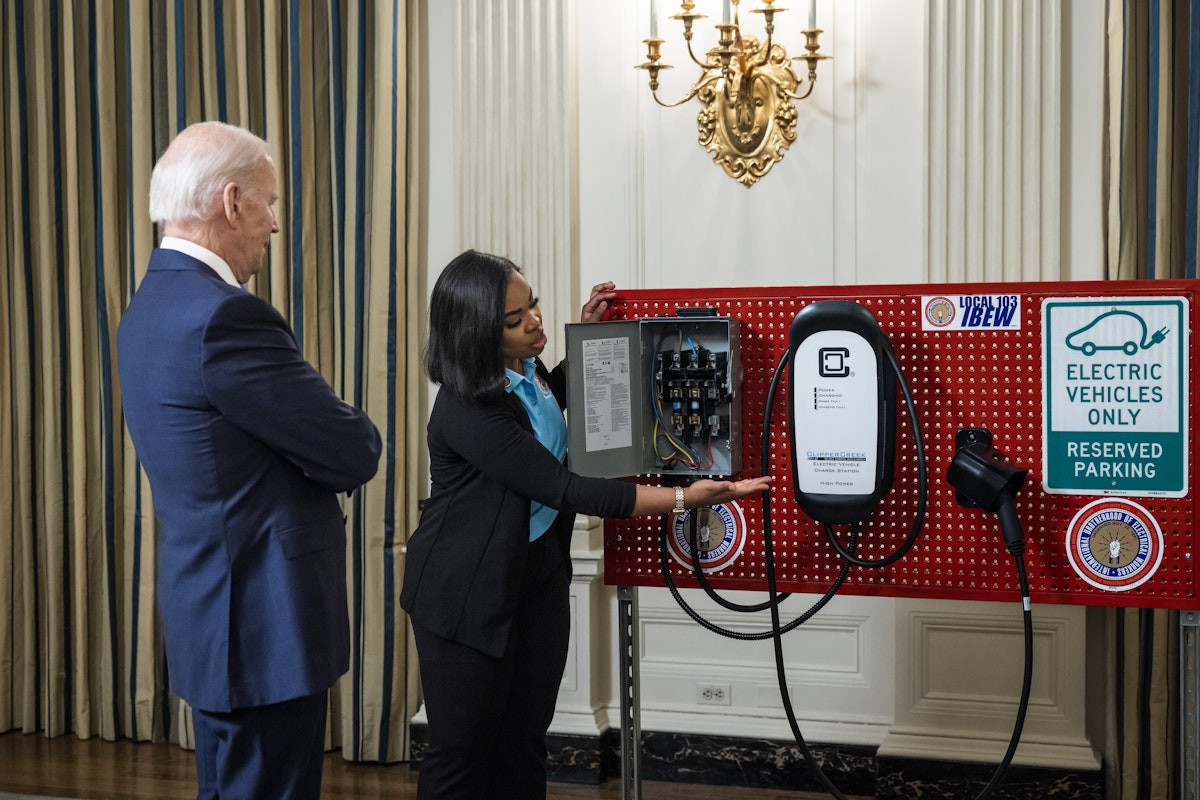
The fundamental problem here is that green industrial policy and decarbonization are different goals, even if they sometimes overlap. Green industrial policy, which is what the IRA is, aims to build out strategic export industries and make supply chains for certain goods less dependent on—if not totally independent of—foreign countries, especially China. That’s why the Inflation Reduction Act features incentives for electric vehicles made in the U.S. and disincentives for competitors. New requirements that took effect at the start of this year mandate that automakers who want their vehicles to qualify for consumer-side tax credits source 50 percent of their components either from the U.S. or countries with which it has a free trade agreement. Last year, 28 cars—including different versions of 14 models, made by five different automakers—qualified for full or partial E.V. tax credits. As a result of tightening rules on E.V. tax credits, just 19 cars across nine models currently qualify. Ford no longer offers any models eligible for either full or partial tax credits.
As I’ve written before, U.S. automakers are especially ill suited to steward a reduction in transportation-sector emissions. They’ve spent the last several decades prioritizing big, heavy cars that both skirt energy efficiency rules and allow them to charge more for superfluous features. Such hulking trucks and SUVs are difficult and resource-intensive to decarbonize, which is especially challenging given that the so-called critical minerals they demand are largely mined and refined outside of the U.S. Selling them, moreover, has meant cultivating a customer base less open to the smaller cars that dominate global E.V. sales. The Big Three effectively ceded the market for those kinds of smaller vehicles to foreign automakers. Now faced with the prospect of electrification, they’re trying to fit a square peg—massive, expensive cars—into the circular hole of passenger vehicle electrification.
If the White House’s goal were simply to get people in the U.S. to buy as many E.V.s as possible, they wouldn’t limit the types of cars that qualify for incentives like this. If the goal were to decrease transportation-sector emissions, their focus would likely be less on electric vehicles than on a rapid expansion of mass transit. The tensions between green industrial policy and decarbonization is a dilemma in the literal sense, of choosing between two possibilities: a maximally competitive U.S. auto sector and a minimally carbon-intensive one. In watering down tailpipe emissions regulations, the administration has chosen to prioritize profligate U.S. automakers over the climate.